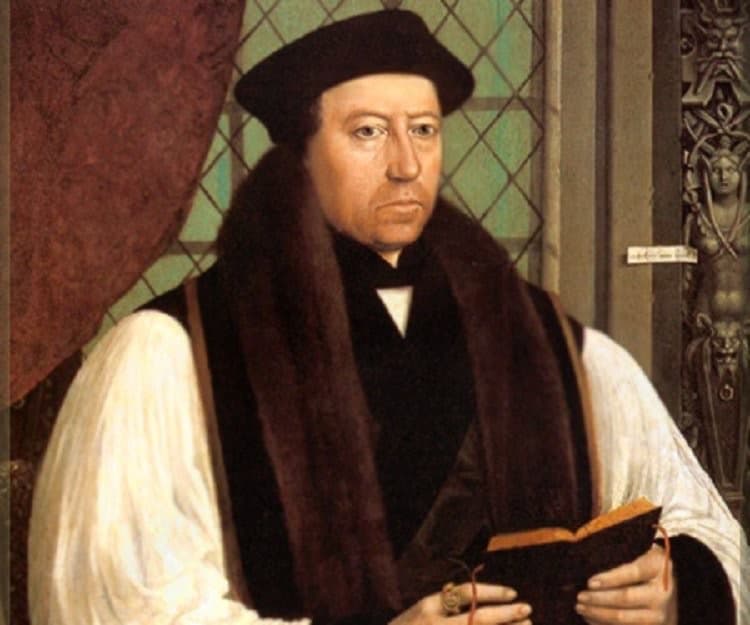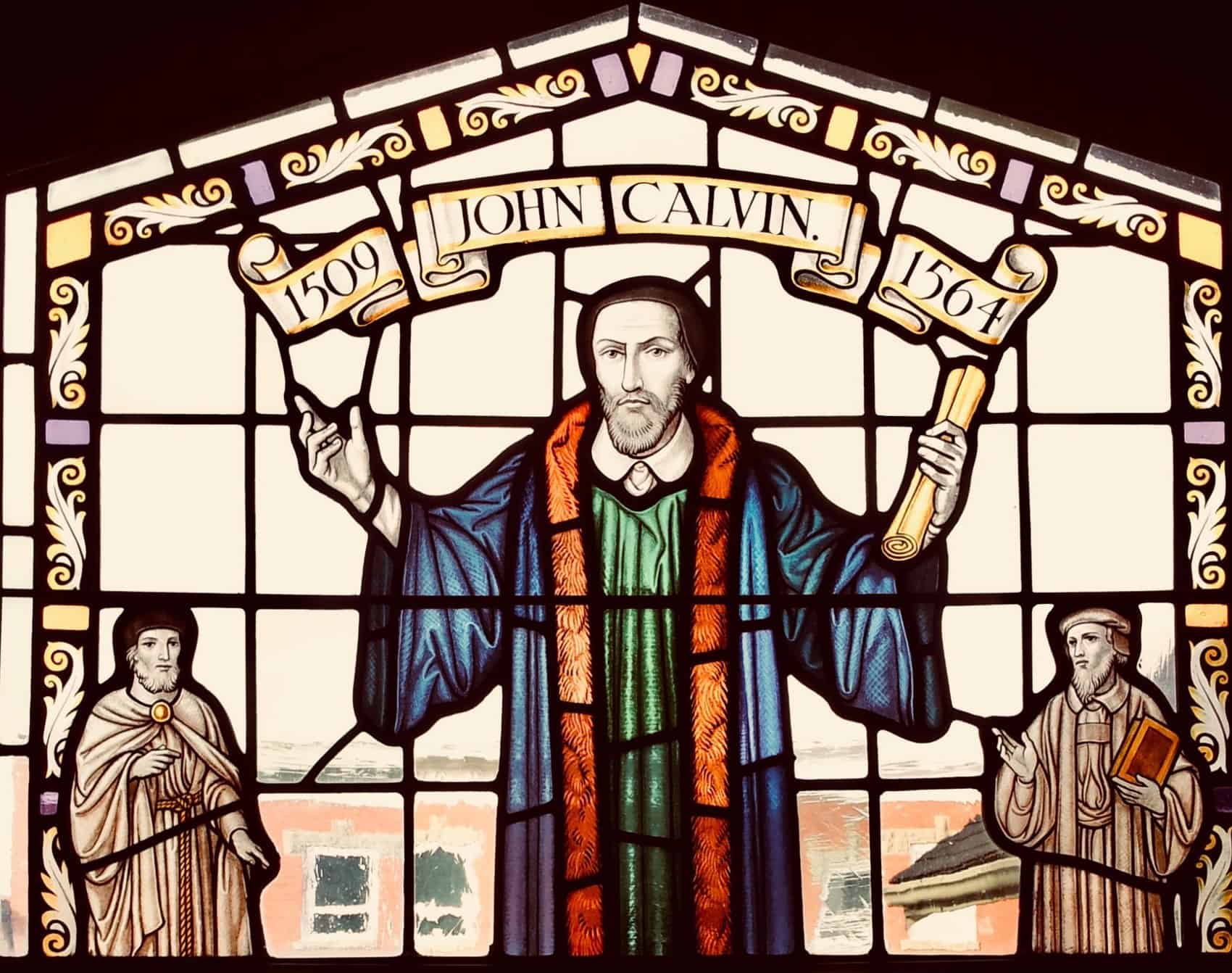This research into the history of age-organized catechetical classes in the church is based on an academic paper that I presented to the practical theology section of the annual meeting of the Evangelical Theological Society in Providence, Rhode Island, on November 16, 2017.
This post is the third in a three-part series.
Click here for Part One in the series.
Click here for Part Two in the series.
“The Church of God Will Never Preserve Itself Without a Catechism”: Confirmation and Catechetical Instruction in the English Reformation
 Following the death of King Henry VIII in 1547, Archbishop Thomas Cranmer grew a beard that suggested solidarity with the continental Reformers—but it was not merely in his pogonotrophic proclivities that the Archbishop of Canterbury imitated what was happening on the other side of the English Channel. Cranmer—not unlike Calvin—required catechesis of children in the context of the church.
Following the death of King Henry VIII in 1547, Archbishop Thomas Cranmer grew a beard that suggested solidarity with the continental Reformers—but it was not merely in his pogonotrophic proclivities that the Archbishop of Canterbury imitated what was happening on the other side of the English Channel. Cranmer—not unlike Calvin—required catechesis of children in the context of the church.
 It seems likely, though not certain, that John Calvin influenced catechetical instruction in England through his correspondence with Edward Seymour, the self-proclaimed Duke of Somerset and the Lord Protector of England during the early years of the minority of Edward VI. In correspondence the Duke of Somerset in the autumn of 1548, catechesis was clearly one of the topics that Calvin covered:
It seems likely, though not certain, that John Calvin influenced catechetical instruction in England through his correspondence with Edward Seymour, the self-proclaimed Duke of Somerset and the Lord Protector of England during the early years of the minority of Edward VI. In correspondence the Duke of Somerset in the autumn of 1548, catechesis was clearly one of the topics that Calvin covered:
There ought to be … a common formula of instruction for little children and for ignorant persons, serving to make them familiar with sound doctrine so that they may be able to discern the difference between it and the falsehood and corruptions which may be brought forward in opposition to it. Believe me, Monseigneur, the church of God will never preserve itself without a catechism, for it is like the seed to keep the good grain from dying out, and causing it to multiply from age to age. And therefore, if you desire to build an edifice which shall be of long duration, and which shall not soon fall into decay, make provision for the children being instructed in a good catechism, which may show them briefly, and in language level to their tender age, wherein true Christianity consists. This catechism will serve two purposes: an introduction to the whole people, so that everyone may profit from what shall be preached, and also to enable them to discern when any presumptuous person puts forth strange doctrine. Indeed, I do not say that it may not be well, and even necessary, to bind down the pastors and curates to a certain written form.
As in Calvin’s ecclesiastical ordinances, catechetical instruction is in this admonition a pastoral duty, linked with proclamation of the Scriptures. Immediately before his recommendations regarding catechism, Calvin urged the cultivation of “lively preaching” in English churches and the provision of an “explicit summary of the doctrine which all ought to preach.” After addressing catechesis, Calvin urged the elimination of chrism, the application of oil by which the power of the Holy Spirit was—according to Roman Catholic tradition—conveyed to the individual. Calvin never mentioned the rite of confirmation itself in this correspondence.
When the Book of Common Prayer was published the next year, Thomas Cranmer retained the rite of confirmation, eliminated chrism, and required catechism. Before a child could be confirmed and receive holy communion, the child was called to commit to memory “all that is here appointed for them to learne” in the Book of Common Prayer. Thus, confirmation and communion became contingent on catechesis. In practice, however, the practice of catechesis was far more significant than the rite of confirmation. In the words of James Turrell,
In the reign of Edward VI, visitation articles, which formed the means by which bishops set norms and queried compliance within their dioceses, largely ignored confirmation. By contrast, the articles did reflect an effort to impose a basic test of doctrinal knowledge before admission to communion. … Catechizing, rather than confirmation, was the real gate to the sacrament of the eucharist.
Most important for the purposes of this research, the Book of Common Prayer—much like the ecclesiastical ordinances that John Calvin wrote for the Genevan churches—required pastors to conduct catechetical classes for children. The context for this instruction was a Sunday evening gathering that occurred, at minimum, once every six weeks:
The curate of every parish once in sixe wekes at the least upon warnyng by him geven shal upon some Soonday or holy day, half an houre before evensong openly in the churche instruct and examine so many children of his parish sent unto him, as the time wil serve, and as he shal thinke conventiente in some parte of this Catechisme. And all fathers, mothers, maisters, and dames, shall cause theyr children, servountes, and prentises (whiche are not yet confirmed), to come to the churche at the daie appoynted, and obediently heare and be ordered by the curate, until suche time as they have learned all that is here appointed for them to learne. And whansoever the Bushop shal geve knowlage for children to be brought afore him to any convenient place, for their confirmacion: Then shal the curate of every parish either bring or send in writing, ye names of al those children of his parish which can say the articles of theyr faith, the lordes praier, and the ten commaundementes. And also how many of them can answere to thother questions conteined in this Cathechisme. And there shal none be admitted to the holye communion: until suche time as he be confirmed.
It is clear that these classes were for children (“so many children of his parish”) and that they entailed not only review but also teaching (“instruct and examine…as time wil serve…in some parte of this Catechisme”).
Three years after the first Book of Common Prayer, Thomas Cranmer—in consultation with German reformer Martin Bucer—produced a revised edition of the prayer book. The rubric in the revision increased the expected frequency of catechetical classes from every sixth week to weekly (“upon Sundaies, and holy doies halfe an hour before Evensong”) but also allowed curates to delegate the responsibility of teaching (“The Curate of every Parishe, or some other at his appoynctmente“), making it possible for other ministers or teachers to undertake this task. The 1552 revision also made explicit what had been implicit in the 1549 edition, that none were to partake in communion until they were able to recite the catechism (“there shal none be admitted to the holy Communion, until suche time as he can saye the Catechisme, and bee confirmed”).
Ian Green summarizes the perspective of the English church on the catechesis of children in this way:
The attitude of the English church to basic catechizing was not very different from that of the mature Luther or Calvin in the stress that was put on the role of the minister. … In England from an early stage the brunt of the burden of ensuring the basic catechism was mastered and understood, especially by those who never attended a school, fell on parish clergy…. That the clergy were aware of their duty to catechize can be demonstrated by the number who in their publications insisted that catechizing was enjoined by public authority, or cited the appropriate rubric or injunction for their action, or praised the authorities for their care in insisting on the regular performance of catechizing in church.
What becomes clear from the ecclesiastical ordinances of Calvin and the prayer books of Cranmer is that, in the sixteenth century, children attended catechetical classes in their churches—and this practice was neither sporadic nor informal. Both in Calvin’s Geneva and among the English reformers, pastors were called to assemble the children on a weekly basis for these classes.
“This Day We Restored Our Primitive Practice”: The Recontextualization of Catechesis in Colonial America and Early Sunday Schools
The expectation of pastor-led catechetical classes for children was so engrained in the churches of England in the sixteenth and seventeenth centuries that the practice persisted among both Conformists and non-Conformists. By 1570, the Church of England had authorized the printing of a more extensive catechism than the one found in the Book of Common Prayer, a catechism prepared by Alexander Nowell for grammar schools. The widespread expectation that children should be catechized is clear from the proliferation of catechisms in English throughout the seventeenth and eighteenth centuries.
The practice of weekly catechetical classes even seems to have followed English settlers across the Atlantic Ocean. On December 6, 1674, a certain Apostle Eliot recorded these words regarding the First Church of Roxbury, Massachusetts:
This day we restored [our] primitive practice for the training up [our] youth, first [our] male youth (in fitting season, stay every sab[bath] after the evening exercize, in the Pub[lic] meeting house, where the Elders will examine theire remembrance [that] day, [and] any fit poynt of catechise [sic]. Secondly [that] [our] female youth should meet in one place, where the Elders may examine [them] of theire remembrance yesterday. [And] about catechisme or what else may be convenient.
Here, the practice entailed not only gatherings of a particular age group but also the separation of these students according to gender. Pastors led the gatherings in processes of examination and instruction, and these practices were not perceived in any way as an innovation. Similarly, in seventeenth-century Plymouth, Massachusetts, the pastor conducted catechetical classes for children “once a fortnight, the males at one time and the females at the other” with one of his fellow elders “accompanying him therein constantly.” By the closing decade of the seventeenth century, these classes had been revived as a weekly practice that took place “between the morning and evening worship, the males one sabbath and the females another.”
Some of the earliest references to Sunday School seem to suggest that this movement represented the broadening of a longstanding practice of weekly catechetical instruction to children who lacked any meaningful connection to the church. The first four women employed by Robert Raikes to teach in his Sunday School were directed by Raikes “to receive as many children as I should send upon this Sunday” and to instruct the children “in reading and in the Church catechism.” Later, Raikes described how
one or two clergymen gave their assistance by going around to the schools on the Sunday afternoon to hear the children their catechism. This was of great consequence. Another clergyman hears them their catechism once a quarter publicly in church, and rewards their good behaviour with some little gratuity.
The template for early Sunday Schools seems to have been Sunday afternoon catechetical classes. If so, what happened in the early days of Sunday School was not an innovation but the extension of an existing practice with a venerable history to include children whose families were disconnected from the church.
A Complement, Not a Competitor
The documented practices of the sixteenth-century Reformers discredit any suggestion that separate classes for children in the church emerged in the eighteenth and nineteenth centuries due to the assimilation of practices in the culture. The institution of catechesis in the churches was perceived and presented by John Calvin in particular as a restoration of the practices of the ancient church, with a flexible manner of implementation. Scripture never commands catechetical classes for children, yet the Reformers in Geneva and England implemented such classes on a regular basis for the purpose of fulfilling the mandates that they did find in Scripture. The ideal seems to have been a weekly gathering, but the schedule could be adapted based on the needs and context of each church. These gatherings did not diminish the expectation that parents were called to train their children in biblical truth. Although the Reformers were at times skeptical about the capacity of parents to fulfill this task, specialized instruction in the context of the church was seen not as a competitor but as a complement to parental instruction.
This post is the third in a three-part series.
Click here for Part One in the series.
Click here for Part Two in the series.
 Discuss in the Comments:
Discuss in the Comments:
To learn more about the English Reformation, take a look at this video:
How did the “middle way” of the English Reformation make it possible for catechism and confirmation to coexist in the Anglican Church?

